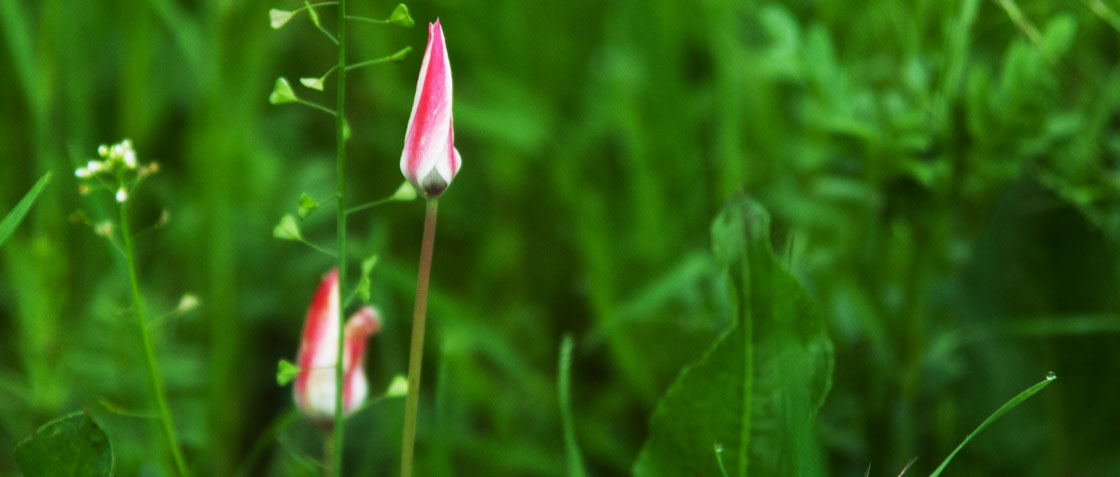
By Urvashi Suri
Illustrations by Deepak Badhwar
Most of us, who have been lucky to be living in the hills of North India, have walked in and around fields, paths, and forests. There have always been these wildflowers which are striking and we have wished to grow them in our gardens. The spectacular flowers don’t seem to have a match in the ones which are cultivated in our gardens. We wish to grow them closer to us in our homes. These listed forty plants are beautiful to look at and suitable to be grown in our home gardens.
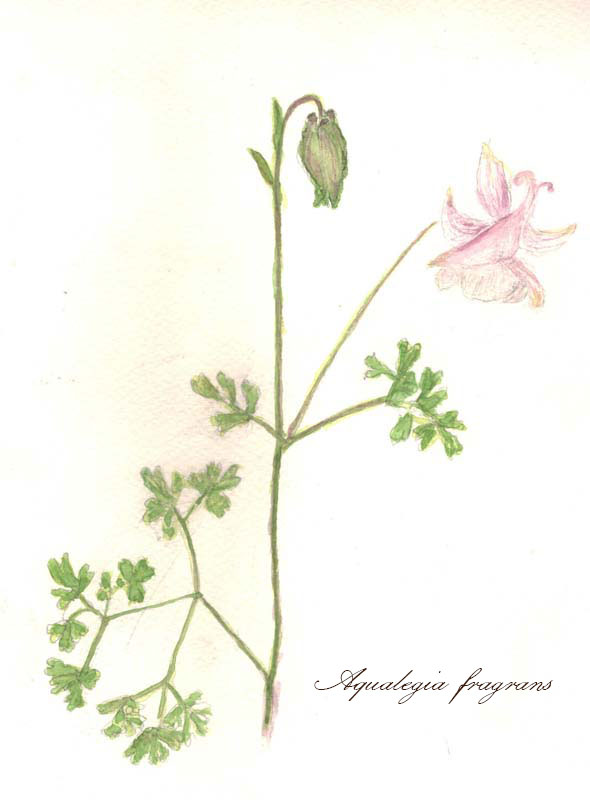
Aqualegia fragrans (Himalayan Fragrant Columbine): A beautiful large-flowered, creamy white, scented Columbine which can grow to a height of up to 2 feet. The plant is branched above, forming a small shrub and it blooms in the months of June to August above a height of 5500 ft in the Indian hill stations.
Culture: This beautiful plant can be grown from seeds in normal garden soil.The seeds need to be sown in late spring for best results.
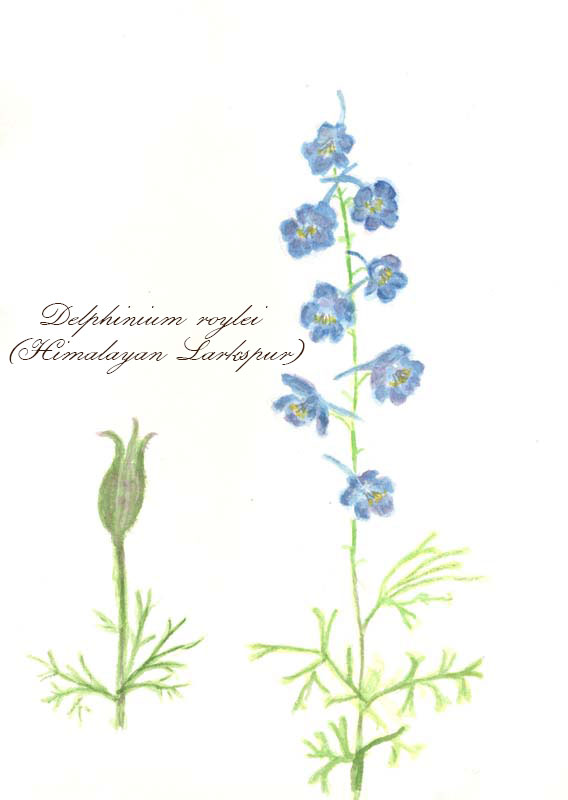
Delphinium roylei (Himalayan Larkspur): Attractive spikes of bright blue flowers 3” to 6” in length are produced on this plant. The plants can grow to a height of upto 2’6” and bloom in the months of July through September. It can be grown in hill stations above the height of 5000ft
Culture: Easy to grow in common gardens soil.The seeds should be to sown in mid April
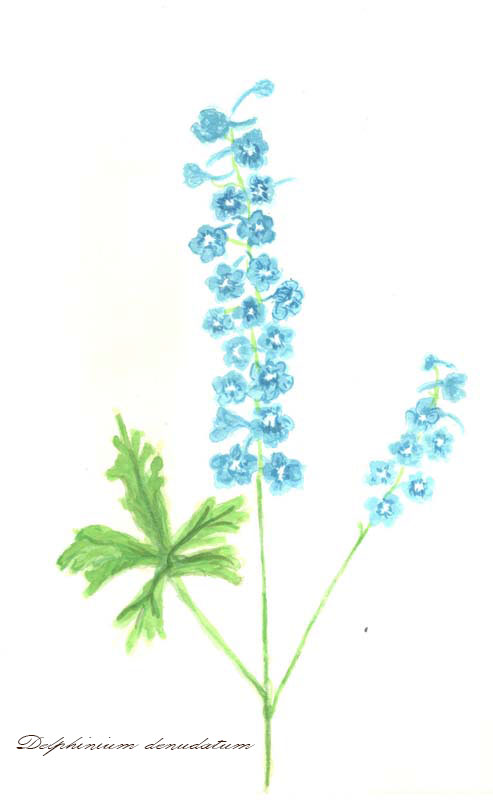
Delphinium denudatum : This plant is much-branched and goes up to 2’ in height. Small, attractive blue to violet flowers are borne in spike like clusters. It is easy to grow in places at an altitude of 4000 ft.
Culture: Easily grown in common garden soil. Sowing time for the seeds is in late March
Anemone biflora: This low growing, very attractive Anemone is suitable for rock gardens. It has attractive white flowers with bluish tinge which change colour to pinkish on maturity. It can be grown in gardens at 4500 ft to 7000 ft.
Culture: Small corms should be grown in light garden soil. This is the best way to grow them. Plant the corms in November to December before hard frost sets in.
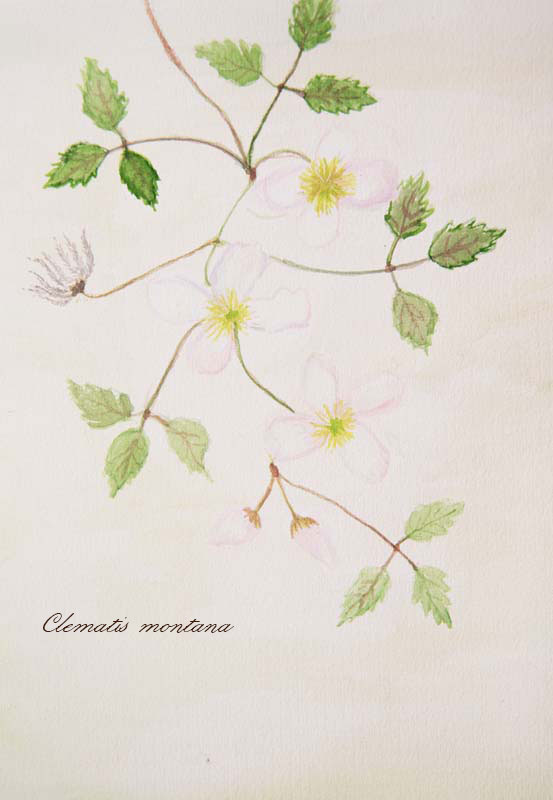
Clematis montana: The pinkish-white flowers of this vigorous climber add charm to any trellis. Profuse flowers in the months of April to May add charm to any garden. It grows best at an altitude of 5000feet
Culture: Seeds can be grown easily in moist garden soil. Plant the seeds in October
Clematis grata: This robust climber has attractive clusters of creamy white, fragrant flowers. It is easy to grow even in the foothills at a height of 2500 feet. Flowering July to September
Culture: Regular moist garden soil. Seeds to be sown in October to November
Clematis buchniana (Lemon clematis): These, bell shaped, lemon coloured flowers hang in clusters from the branches. This creeper grows well in lower altitudes from 3000 feet upwards to 8000 feet. The flowers bloom from July to October.
Culture: Seeds should be grown in moist garden soil in the month of April.
Paeonia emodi ( Himalayan Peony): This rather woody perennial plant has beautiful, large, creamy white flowers with a bright yellow centre. Good to grow at altitudes of above 5000 feet. The plant grows to a height of 2’ in full sunny position. The flowers bloom in the months of April to May.
Culture: Seeds can be grown in normal soils and are to be sown in autumn. Germination occurs the following late spring.
Berberis asciatica: A much branched 6’ to 8’ tall shrub with pale yellow flowers. This grows well in lower altitudes of 4000’ to 7000’. This spiny shrub should be planted along the periphery of gardens. Flowering is from March to May. The fruit is also attractive and attracts local birds to feed on them in summers.
Culture: Sow the seeds in garden soil in autumn.
Berberis aristata: This shrub grows to a height of six feet and above and does well from 5000 feet upwards. The flowers are bright yellow and bloom in clusters from April to June. The fruit is a rich deep purple.
Culture: Grown in well-drained garden soil, the seeds should be sown in autumn.
Dianthus jacquemontii ( Pink): This is small herbaceous perennial suitable for rock gardens. Large, white flowers bloom in the months of June and July. It can be grown at an altitude of 4000 feet upwards
Culture: Grow seeds in normal garden soil in autumn.

Notholirion thomsonianum: A bulbous plant with a stout, 1’ to I’6” long, spike of pale lavender-pink, fragrant flowers, blooming in March and April. This bulb does well in gardens above 4000 feet. They should be planted on slopes or beds of sandy-loamy soil in partial shade.
Culture: Bulbils need fairly deep planting for best flowering. Best planted 4” deep for good results in the month of October, in a well drained, sandy loamy soil.
Sophora mollis: A seven feet tall shrub with beautiful clusters of golden yellow pea shaped flowers. It does well in dry soil and slopes at a height of 5000 feet. The flowers bloom in April to May.
Culture: Sow in autumn in garden soil
Rosa moschata: A large, thorny rambler with attractive, white, fragrant flowers in the month of April to June. It can be grown from a height of 4000 feet upwards to 7500 feet. Orange coloured attractive fruits follow the flowering which is enjoyed by local birds.
Culture: Sow seeds in well drained garden soil in autumn.

Rosa webbiana: A small three to four feet tall shrub with showy pink flowers. It has very thorny branches and does well on sunny slopes. It grows at an altitude of above 4000 feet.
Culture: seeds to be sown in well-drained garden soil in autumn
Rosa macrophylla: A tall shrub with sparse thorns. Large pink flowers bloom in the months of June to August. The shrub does well in heights above 6500 feet. The fruits are large and flask shaped.
Culture: sow seeds in garden soil in autumn

Hypericum hookerianum: A small shrub two to three feet tall, with large yellow, single flowers. The plant grows well from the altitude of 4500 ft upwards. The blooming time is from July to October. It needs good, moist soil to do well.
Culture: Grow from cutting or seed in fine, moist soil in autumn.
Berginia ligulata: A large leaved plant suitable for borders and rock gardens with moist soil. The plants grow best in shady areas and flowers in the months of April to May in hill stations from an altitude of 4500feet.
Culture: Very fine seed to be sown in fine, rich, moist soil in autumn or by the division of rhizomes.
Sedum multicaule: A beautiful, small succulent suitable for rock gardens and retaining walls. Clusters of yellow flowers in the months of June to August
Culture: Sow seeds in autumn in fine, moist soil
Begonia picta: The common Begonia with attractive white to pinkish flowers. It does best in shade or mossy rock gardens and walls. This begonia is suitable to grow even at lower altitudes of the Nilgiris or wet parts of our country. It flowers from July through September.
Culture: Very fine seed to be planted on super fine moist soil or divided by corms
Punica granatum: The pomegranate shrub with attractive flowers in April to June. Growing to six feet from an altitude of 2000 feet to 8000 feet, it fruits from July to August. Punica grows best in dry, limestone soil in full sun. Very suitable for dry , limestone slopes.
Woodfordia fruticosa: A small shrub growing to four feet from lower altitudes. It blooms from February to April with tubular scarlet flowers which attract sunbirds and other nectar feeders.
Culture: Seeds planted before monsoon in normal garden soil.
Jasminum humile: A small shrub of three feet with attractive light yellow flowers in April to June. The shrub grows at an altitude of 5000 feet upwards
Culture: : Plant cuttings or sow seeds in autumn in garden soil.
Jasminum officinale: A large climbing shrub with pink buds which bloom to white, fragrant flowers in clusters. Flowering period is May to July and it grows best from a height of 4000 feet.
Culture: Plant cuttings or sow seeds in autumn in garden soil.
Gerbera gossypina: This herbaceous perennial has cream coloured, vanilla-scented flowers blooming in March through May at an altitude above 4000 feet. The plants are suitable for borders and beds.
Culture: Woolly seeds planted in August to September in rich garden soil.
Androsace rotundifolia: A beautiful herb suited for rock gardens. Light pink flowers carpet the niches in the rock garden. The flowers start in June to July in gardens above 5000 feet.
Culture: Fine seeds to be planted in very fine, moist humus rich soil in September
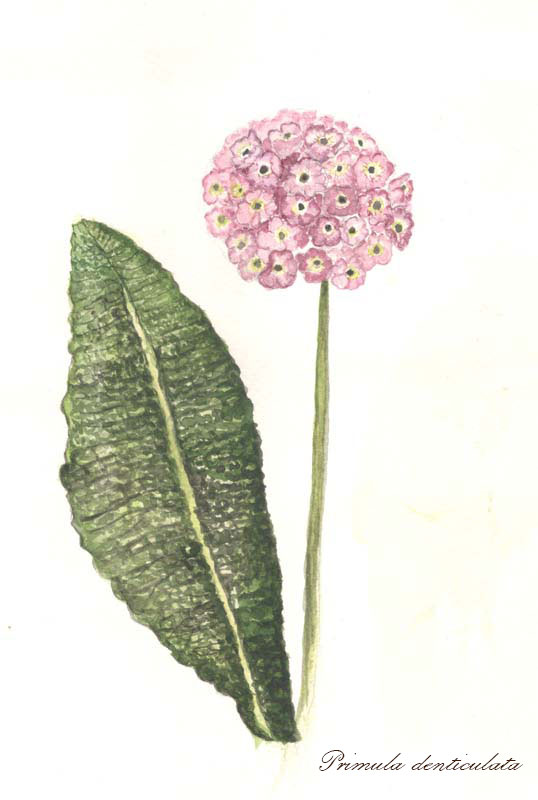
Primula denticulata: Beautiful, mauve-purple, globe heads of this primula is suitable for beds, borders, and slopes. This plant blooms from April to June in gardens above 5000 feet.
Culture: Fine seeds to be planted in very fine, moist humus-rich soil in September
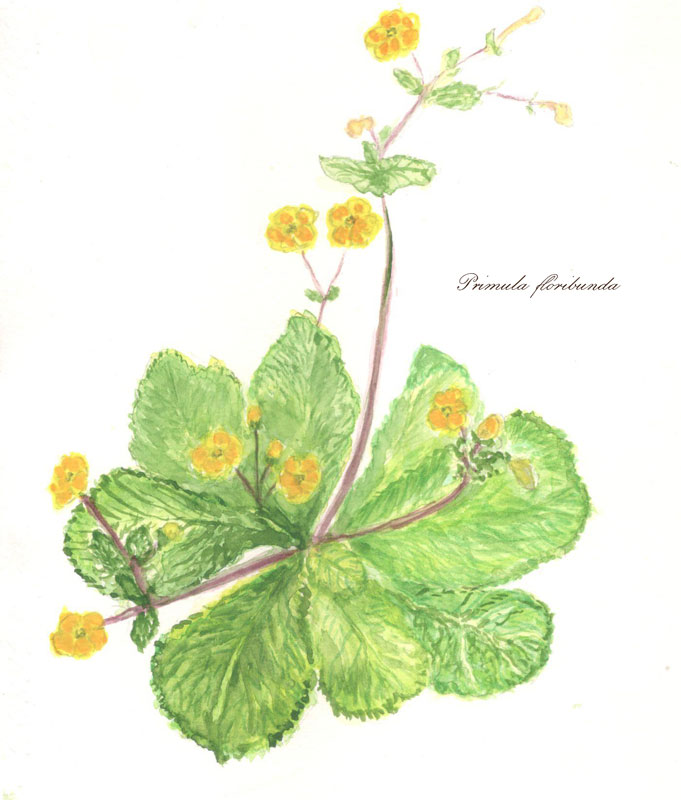
Primula floribunda: This beautiful yellow flowered Primula is perfect for shady, boggy areas of a hill station garden. They do well in lower altitudes of 3500 feet as well. The flowers start from April to June.
Culture: Broadcast seeds in moist, boggy areas for best results in August.
Salvia moorcraftiana: A herbaceous plant which does well on dry, sunny slopes. Spikes of pale blue flowers start in the month of May in gardens above 5000 feet.
Culture: Sow seeds in the month of September in garden soil.
Daphne bholua: A five feet tall, evergreen shrub with sweet scented, white flowers flushed with pink. The flowers bloom in winter from October to April from 5000 feet to 8500 feet altitude.
Culture: Cuttings and seeds to be planted in summers.
31.Roscea purpurea: A dwarf herb growing up to 12”.It is suitable to be planted in beds or borders with dappled sunlight under trees. The plants grow best from a height of 4500 feet. The flowers bloom from June to August
Cultivation: Rhizomes to be planted in rich garden soil.
Iris decora: A beautiful pale lilac iris, blooming in June and July in gardens at heights of 6000feet and above. Plants do well on dry, sunny slopes.
Cultivation: Plant seeds in September in garden soil
Iris milesii: Light mauve flowers bloom in June. It does well in gardens from an altitude of 5000 feet. The plants do best in dappled sunlight.
Cultivation: Seeds to be planted in September in garden soil.

Iris germanica var. kashmiriana: A fragrant, white flowered iris flowering from April to May. Common in Kashmir valley, it does best on dry, sunny, slopes. They grow best at altitudes of above 5000 feet.
Cultivation: Divide rhizomes and plant on the surface in normal garden soils. The seeds can be planted in September.
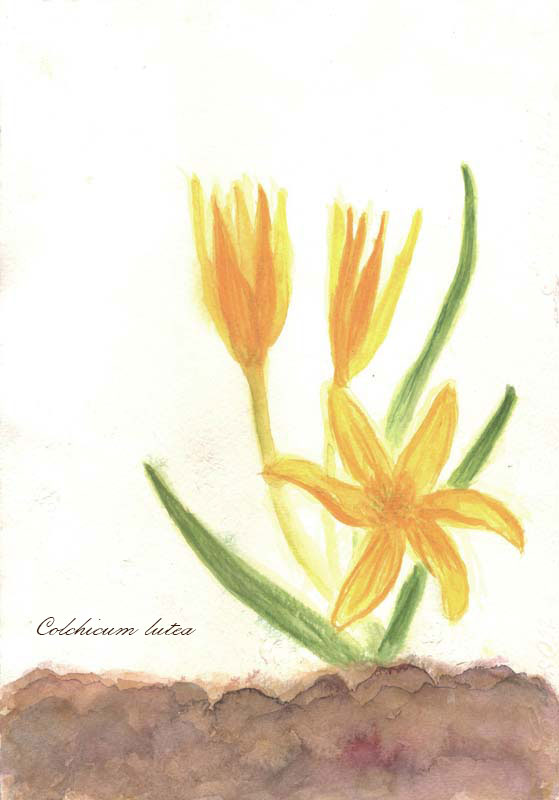
Colchicum lutea: This bulbous plant has beautiful, golden yellow flowers from February, pushing their heads through snow! Very suitable in rock gardens, clumps or under trees. Does well above 4500 feet
Cultivation: Propagate with bulbs or plant seeds in November, in regular garden soil
Eremurus himalicum: This beautiful foxtail lily has white flowers in long spikes. It does best in sunny, slopes, flowering in May and June in Hill stations above 5500 feet.
Cultivation: Propagation from rhizomes or sow seeds in November in garden soil
Fritillaria imperialis: A magnificent tall bulbous plant growing 2’ tall. Bright, orange bells hang in a circle, giving it the name of the Crown imperial. The plant flowers in April and show the best in individual beds. Gardens above 5500 feet have the best show of these flowers
Cultivation: Grow bulbs in semi shade beds. Seeds to be planted in November in rich garden soil
Hemerocallis flava: A dwarf day lily growing to 1.5’ doing best in beds in a sunny position. The mildly fragrant, yellow funnel-shaped flowers bloom in May and June. Grow in gardens at an altitude of 5000 feet and above.
Cultivation: Divide rhizomes and plant in gardens soil
Lilium wallichianum: This plant has large, white, sweet-scented, funnel-shaped flowers. The plants grow 3 ‘to 5’ tall in well-drained but moist partially shaded locations. They are best suited for gardens above 4000 feet to be planted in beds or light slopes in dappled shade. The flowers come from June to August
Cultivation: The bulbs are stoloniferous and grow a little distance away from the parent bulb. Seeds and bulbs should be planted in autumn in moist, rich, semi-shaded, light humus-rich soil.

Tulipa stellata ( clusiana): A beautiful, wild tulip with white flowers and a rich orange-red band on the outer side of petals. This small tulip is best suited for a spring flower bed; edging or rock gardens. The flowers come out best in sunny or partially sunny locations in gardens above 4500 feet in April through May.
Cultivation: The bulbs should be planted once it has got cold. The ground temperature should not be very warm or else root formation will not be good. Planting should be done in late November or early December in sandy, loamy soil which is good for all tulips.
About the Author
Mrs. Urvashi Suri
 Born on 17 November 1940 (Baramulla, Kashmir)
Born on 17 November 1940 (Baramulla, Kashmir)
Known as “posh battni” or the “flower lady” in Kashmiri, Urvashi, is most of the time walking, talking, and blooming with flowers. She is number five of the six beautiful daughters of the Late Mr.P.N.Kohli, Manager Private Estates to the Maharaja Harisingh of Kashmir.
The young Urvashi stood first in the J&K University in 1960. To her surprise, she was offered admission into M.Sc. Botany by the very prestigious Aligarh, Allahabad, and Benares University. Her father was proud and this event led to her future career in Himalayan floriculture and botany. She completed her MSc in Botany from Kashmir University. While she was doing her M.Sc. Botany, her herbarium specimens were used in the Royal Botanic Kew Gardens (U.K.) and The University of Kashmir as references for identification purposes.
Her dedication and efforts were recognized by the P.N. Kohli Memorial Award for the Best Knowledge of Alpine Flora
She worked with P Kohli & Co. till 1990 but the firm was forced to shut down and she was forced to leave her home in Kashmir due to terrorism.
The description of these plants has been written by her with personal experience in growing them, in her nursery in Srinagar.
